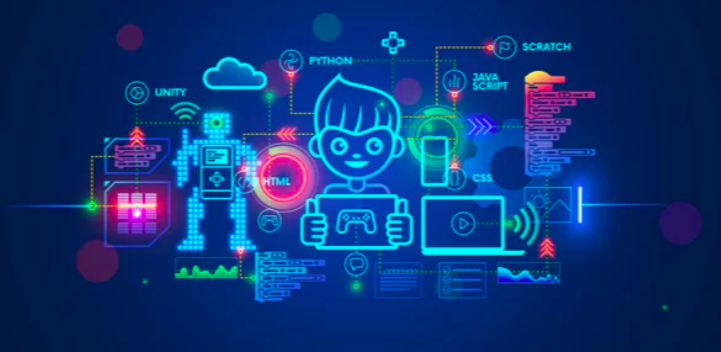Universal Design

When creating learning experiences, the goal is to make sure every learner feels supported and engaged in what they’re doing. When we developed our Interactive Learning Module: Introduction to Programming, It was important to make sure our plan works for all kinds of learners whether they’re visual, auditory, or hands-on learners.
Supporting all Learners
Programming can be intimidating, especially for beginners. That’s why our module provides a clear and accessible learning plan that anyone can do:
Learning methods
- Visual learners: get diagrams and flowcharts to help them understand coding logic.
- Auditory learners: follow along with video explanations.
- Hands-on learners: Receive coding exercises where they can try things out for themselves.
We also made sure students have different ways to engage. Some might enjoy working through coding exercises solo, while others might prefer group work or guided lectures.
Adjusting for Unexpected Situations
If a major disruption happens and learners suddenly have to work from home.In this case our introduction to programming module is already designed to work online. But to make sure everything works out some things that could be added are:
- Online workshops through zoom where students can work together in real time as well as ask questions along the way
- Access to pre-recorded lessons so students can learn at their own pace and go back to watch them at any time
- Step-by-step instructions to help learners run through the assignments
Making these adjustments would guarantee that during any unexpected situation learners can continue learning without getting behind.
Potential Barriers
One barrier that can be seen is that not all learners have access to the same technology. Some might not have access to a computer or may only have a mobile device. Some code may not work for certain computers causing issues as well. To help resolve these barriers I would offer these suggestions:
- Offer downloadable PDFs and free coding programs.
- Let students write code on paper if they can’t run live programs at home
- Provide solutions and resources for finding an available computer (Ex. renting from the local library)
We did our best to create a learning design that everyone can do by focusing on accessibility, flexibility, and engagement, our goal is to make programming more approachable for all learners, providing a simple and easy to follow guide for learners with no experience to understand programming.
March 31, 2025
Hi Cassie!
I really appreciate how your group acknowledges how learning code for the first time can be very intimidating, putting learning methods in place to help increase understanding and eliminate some of that anxiety and confusion for the students. The solutions to unexpected situations is very practical and a real concern as things come up in peoples lives and sometimes students will not be able to attend class. The last part is within potential barriers as I would assume you would need quite a few pre-requisites to start coding IE: Computer but your addition of code on paper completely eliminates this making coding quite frankly accessible to anyone! I’d love to see if you guys could see if you could even make it more accessible thinking about how visually impaired would be able to code or how you would structure your learning design for a student with those needs. Anyway very well though out and thank you for sharing!
March 31, 2025
Hi Cassie,
Your blogpost is well structured and was enjoyable to read. I like how your solutions to adjust for unexpected situations were not only tech focused, which is quite important in building equity focused design.
March 31, 2025
Hey Cassie! I love how your module addresses the diverse needs of learners by offering multiple engagement methods. It’s great that you’ve also planned for flexibility, like online workshops and pre-recorded lessons, to accommodate unexpected situations. Your approach to removing potential barriers shows thoughtful consideration for students with varying levels of access to technology. Overall, your plan makes programming more approachable and inclusive for all learners, which is a great way to support beginners. Nice job, and thanks for sharing!